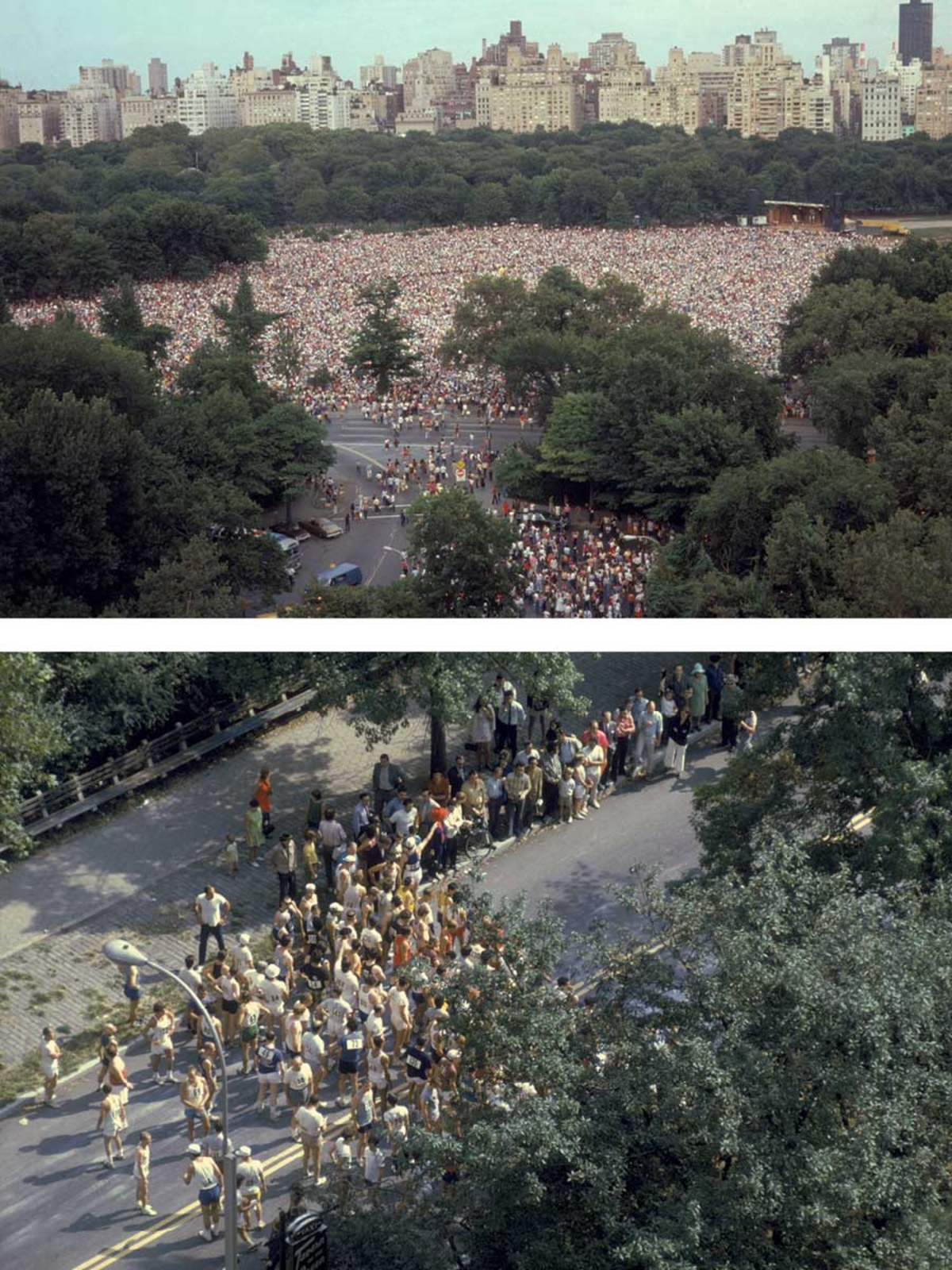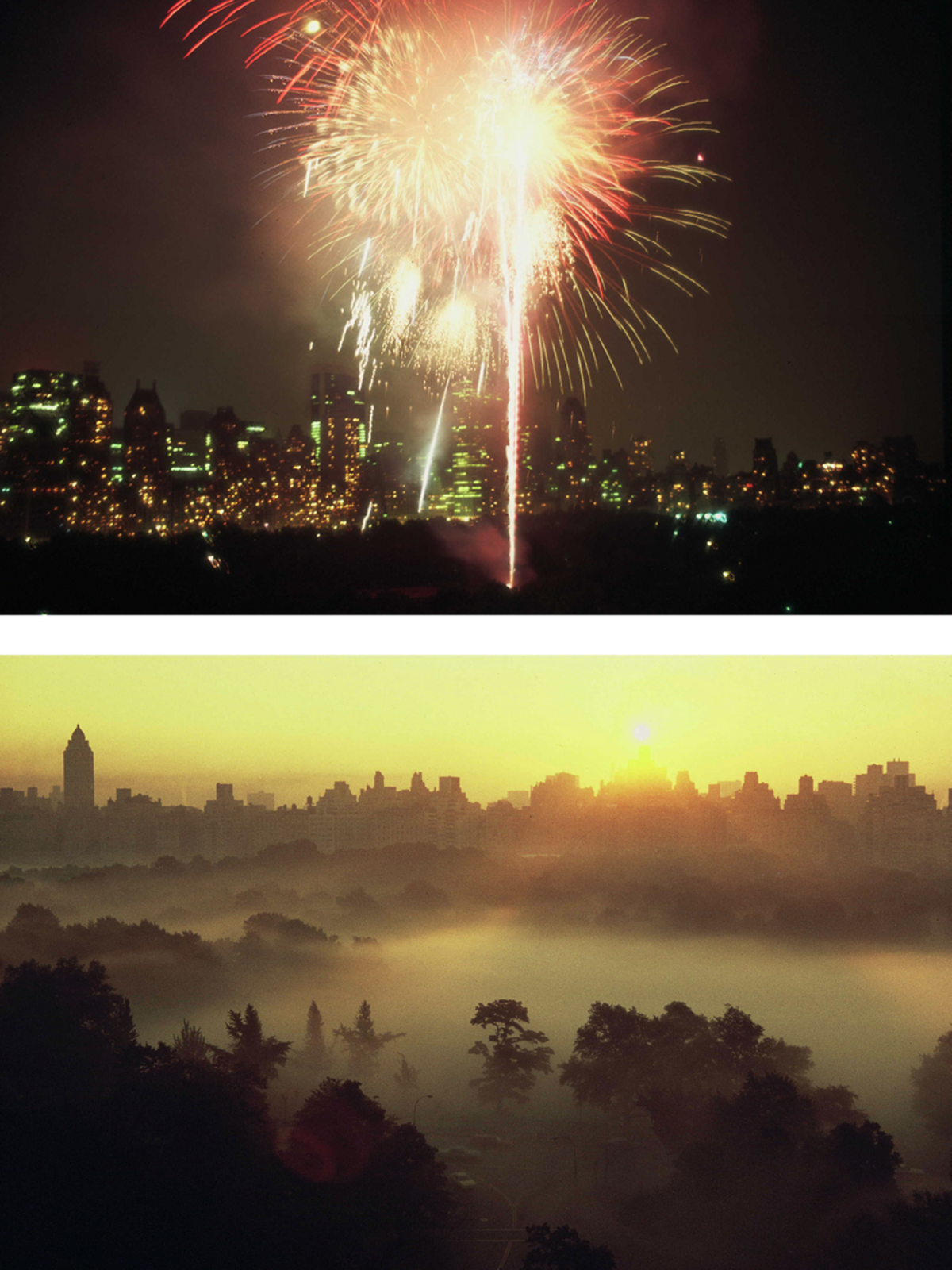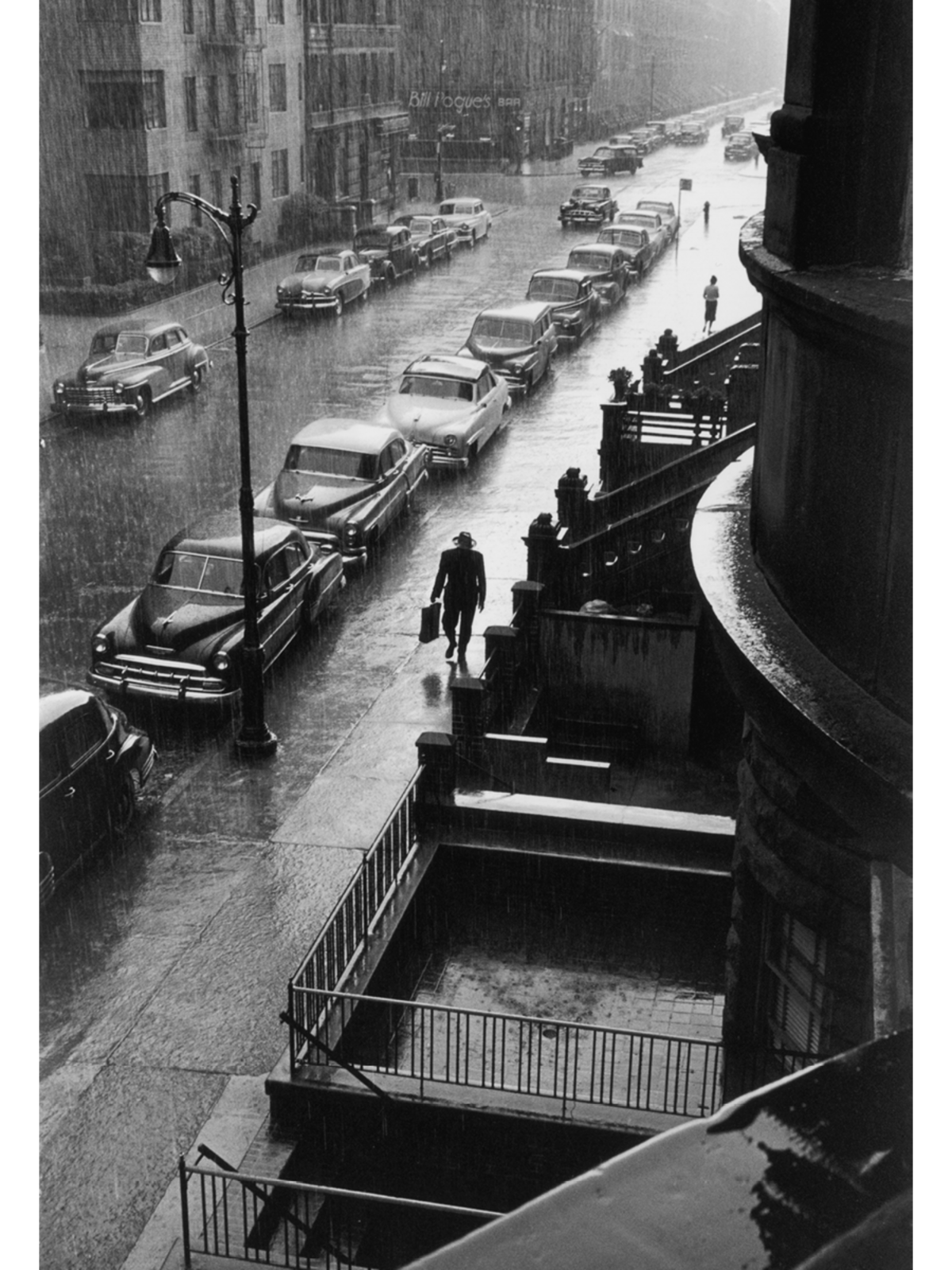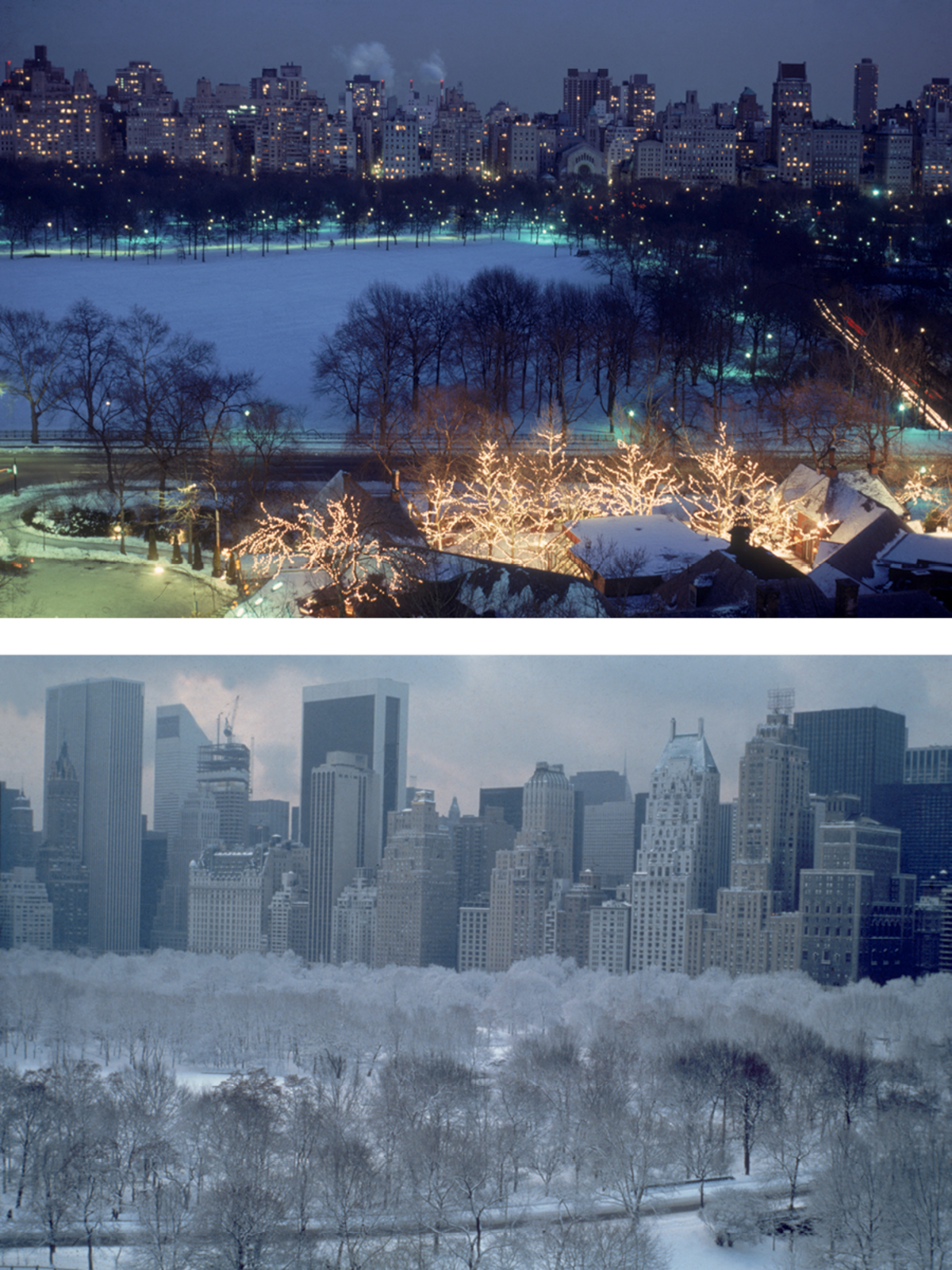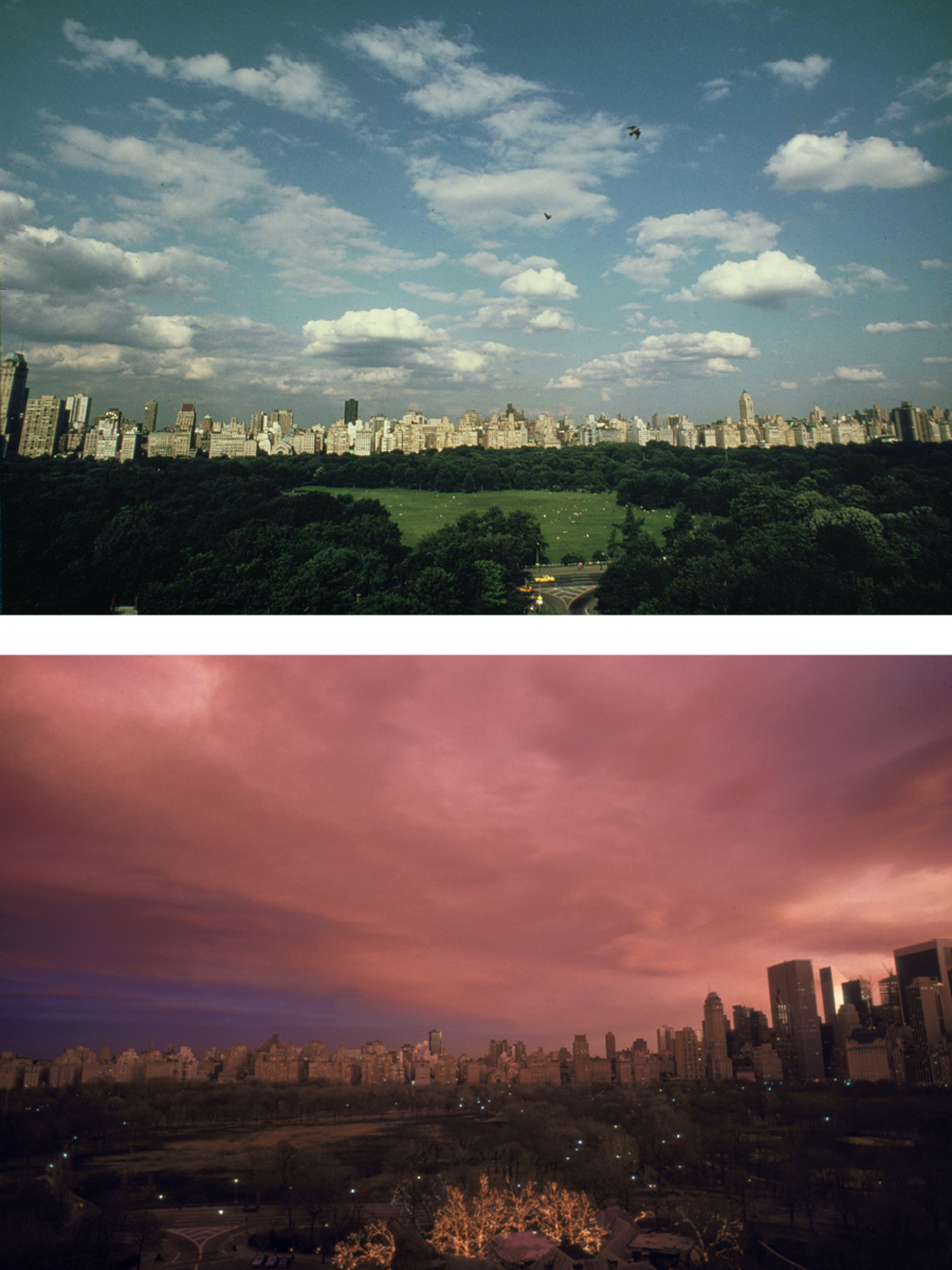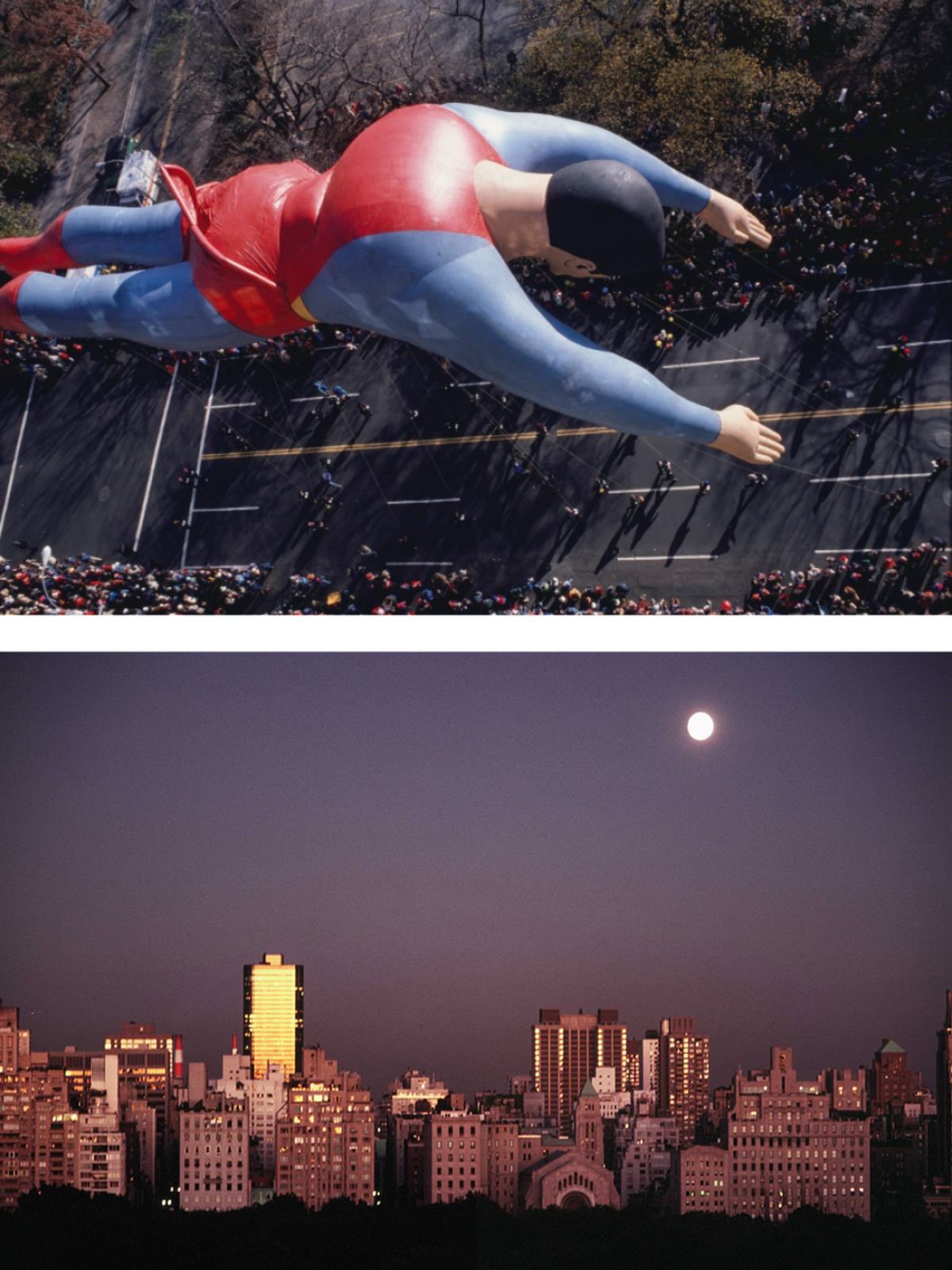My window shows the travelling clouds,
Leaves spent, new seasons, alter’d sky,
The making and the melting crowds:
The whole world passes; I stand by.
—Gerard Manley Hopkins
Mostly she waited. Waited “for the clouds to become the right shape,” for a shadow or a ray of light, sometimes rising before dawn to shoot a sunrise that “I must have sensed in my sleep.”
While the American photographer Ruth Orkin once traveled the world taking pictures, she found her greatest inspiration right outside her window—a vantage which has lately become all too familiar, sealed as we are in our homes for the foreseeable future.
Beginning in 1958, until her death, in 1985, Orkin took many of her most memorable pictures—the first New York City Marathon, the Macy’s Thanksgiving Day Parade, ethereal vistas of Central Park at dawn, in all seasons—from her 15th-floor apartment at 65 Central Park West that Orkin shared with her husband, the photographer and filmmaker Morris Engel, and their two children. Mary Engel, Orkin’s daughter, recalled how neighbors would sometimes call to ask, “Is Ruth at her window? She has to see this … ” Because her view faced east, Orkin wrote that she could “never shoot an actual sunset, only sunrises. All my sunsets … are reflections of the sunset on buildings or on the clouds.”
If you know Orkin’s work at all, it’s probably for her most famous image, American Girl in Italy, in which a tall, slim young woman runs the gauntlet of catcalls on a street in Florence. Orkin was traveling alone and had met the photo’s subject, Ninalee Craig, in the lobby of their pensione; they decided to work together on a series of photographs that would show “what it’s really like to be a woman traveling alone.”

Born in 1921 and raised in Hollywood (her mother was the silent-movie actress Mary Ruby), Orkin took her first pictures at age 10 with a 39-cent Univex. In 1939, aged 17, she biked and hitchhiked from California to New York, lured by the World’s Fair, and returned to the city to live in 1943. Soon her work was appearing in Life, Look, and Ladies’ Home Journal. Orkin’s sequence of street urchins playing cards was included in Edward Steichen’s landmark “Family of Man” exhibition at the Museum of Modern Art, in 1955.
In the 1960s, Orkin found herself mostly at home, caring for her two young children. But she didn’t want to quit her profession, so she kept her camera and lenses handy on a dining table near the window. “My situation was ideal,” she later wrote, “although I don’t remember thinking of it that way at the time.” In A World Through My Window she recorded that a typical day might include:
“6:00 A.M.: mist/feedings
2:00 P.M.: view/playpen time
5:00 P.M.: dusk scene/baths
10:00 P.M.: night shot/baby asleep”
She once wryly introduced herself at an International Center of Photography lecture as “housewife, scenic photographer.”
Following a long battle with cancer, Orkin died in 1985. Engel recalled, “We didn’t let other people shoot out the window. Albert Maysles came up and shot a little bit of footage for Christo’s The Gates, and they used it for the movie Hair, but a movie was different. There was something about shooting stills that was really just saved for Ruth.”
The view outside her window—whether hushed in winter snow or brightened in the fresh green of spring—became Orkin’s final subject and seemed to somehow capture the vast heart of a city, imperiled but unbowed.
We are all Ruth Orkin now.
Sam Kashner is a contributing writer for Air Mail


